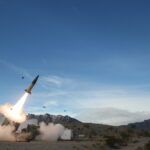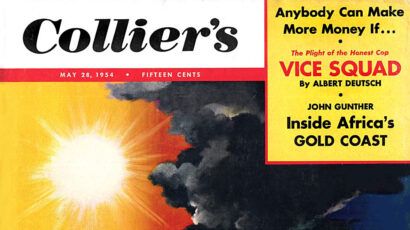One way to fight radiological terrorism: alternative technology
By Egle Murauskaite, | March 18, 2014
This month’s Nuclear Security Summit in The Hague is expected to devote increased attention to securing radiological sources from accidental dispersal or deliberate use by terrorist groups. This reflects a shift from previous summits, which have predominantly focused on fissile materials, such as highly enriched uranium (HEU). While additional security measures are welcome, permanently reducing the threat posed by radiological sources will require taking steps to minimize and eliminate their use altogether, transitioning to alternative technologies and practices. The United States and other international leaders of nonproliferation efforts should deliver a “gift basket” to this year’s summit, in which they pledge to lay out a road map for such changes at the next summit in 2016.
High-risk radiological sources like cobalt 60 and cesium 137 serve valuable purposes in industry and research, but particularly in medicine. However, these sources are usually located in publicly accessible spaces, like hospitals or universities—and they tend to be transported in civilian vehicles, without extraordinary security measures, at the beginning and the end of their lifecycles. This makes radiological sources more accessible to determined terrorists than fissile materials, and they are also more likely to be involved in an accident that exposes the public to radiation. Using some of these materials with conventional explosives in a “dirty bomb,” or simply leaving them in public to create panic, is far easier than assembling a nuclear weapon. The latter point is well illustrated by the incident in 1985 in Goiania, Brazil, when two people broke into radiology department in an abandoned hospital and, while stripping equipment for scrap metal, accidentally damaged a container holding about 93 grams (3.3 ounces) of cesium 137. As a result, two people died of radiation sickness, 249 were contaminated, and 112,000 had to be monitored for adverse health effects; the incident also forced a three-year effort to decontaminate the environment, with costs running to tens of thousands of dollars. Another cesium 137 incident occurred in Tammiku, Estonia in 1993, when three brothers broke into a radioactive waste depository and one of them pocketed the source (and subsequently died); Estonian authorities had to call for international decontamination assistance. The relative accessibility of radiological sources is also well illustrated by a more recent incident in Mexico in December 2013, when a truck carrying a medical cobalt 60 source was stolen, provoking worldwide concern.
The Nuclear Security Summit process offers a promising platform for addressing these risks and launching a new initiative to replace the radiological sources of most concern with non-isotopic alternatives. For example, the International Atomic Energy Agency’s five-tier system, categorizing commercial radiological sources based on the risks associated with their use, has identified cesium chloride (or cesium 137) as an “extremely dangerous” or Category 1 source; yet, it remains one of the most commonly used radioactive substances. The US National Academy of Sciences report on radiation source use and replacement published in 2008, expressed particular concern about the continuing use of cesium chloride: Easily dispersible, water soluble, and relatively easy to handle, this isotope is especially suitable for terrorist purposes (e.g. a “dirty bomb” or poisoning the water supply). In a dispersal scenario under ideal conditions, less than half a gram of cesium 137 could contaminate an area of approximately one square kilometer. In a direct exposure scenario, anyone standing within one meter from the unshielded cesium 137 core of a typical blood irradiator would receive a radiation dose of 32.8 rem per minute, meaning that anyone exposed to the source for more than 3 minutes would need hospitalization and that half the population exposed for more than 10 minutes would die within the next two months without adequate medical treatment.
A first step to get the ball rolling in regulating radiological sources would be a move toward a gradual phase-out of cesium chloride use in pre-transfusion blood irradiation on a global scale—a domain in which non-isotopic alternatives are considered to be the most viable in the short-term. The United States, in particular, should spearhead this effort as the initiator of the summit process, as a global leader in nonproliferation, and also as the world’s largest market for cesium 137 blood irradiators.
Presently, only about one blood bag out of 10 requires irradiation prior to transfusion, to prevent graft-versus-host-disease (GVHD), a rare but fatal complication in which white cells from a donor’s blood attack tissue in the recipient body. Risk groups include newborns, patients whose immune systems are compromised, and recipients of blood donations from family members. A number of countries have started to employ alternative technologies to prevent GVHD, and while further clinical studies would be useful, there does not appear to be evidence of any significant differences in patient outcomes when doctors employ these substitutes. For example, Japan, whose particularly homogeneous population is at a higher risk of GVHD, has been consistently using Hitachi Medical Corp.’s X-ray irradiators to treat blood bags prior to transfusion. Reportedly, the stigma associated with radioactive materials was the primary reason for this choice, and the device in question has not yet received approval from the US Food and Drug Administration. But since the introduction of Hitachi's irradiators in 2000, no cases of graft-versus-host disease have been recorded. France has declared its intent to phase out cesium 137 blood irradiators by 2016, and some 40 per cent of its irradiators are already X-ray based. Other countries coming to increasingly rely on X-ray blood irradiators include Canada, Germany, Italy, Norway, Sweden, the United Kingdom, and some states in America.
While X-ray blood irradiators reduce security risks (and associated costs) for the hospitals operating them, the purchase price and maintenance costs of these machines are higher than cesium 137 irradiators, and their operation requires considerably more electricity and water, which may dissuade some potential buyers. But some of the cost differential is based on regulation: Operators of cesium 137 irradiators are not required to carry any insurance coverage for the risks associated with their use, nor do they bear any share of the burden of disposing of disused cesium sources. Also, with technological advances and more companies entering this market, the price of X-ray irradiators is expected to decline over the next few years.
Both X-ray and cesium-137 based blood irradiators are in regular use at blood banks and at some major hospitals. Many medical facilities do not own such specialized devices and purchase blood-irradiation services from the abovementioned large institutions, or turn to other alternatives. One such option, increasingly popular in Europe, is the photochemical treatment of blood and blood products, using amotosalen hydrochloride solution activated by ultraviolet-A light. Designed to inactivate pathogens in general, this treatment is also effective against graft-versus-host disease, and the machine used for this purpose fits on a laboratory counter. Another alternative is turning to linear accelerators, used by hospital radiology departments for treating cancer patients. This method has been employed by hospitals that need irradiated blood infrequently but urgently, as well as developing countries unable to afford specialized blood irradiation devices. A hospital in Italy has also used this method to save time and costs, and a cancer treatment center in Alabama has been supporting a nearby blood bank by providing such a service. In both cases, there was a trade-off between using linear accelerators for blood irradiation and potential patient treatment.
Regardless of which specific alternative is chosen, it is important to take steps to slow and eventually stop further sales of new cesium 137 blood irradiators, and move toward phasing out those operating now. Preventing sales of new sources is especially important, given the limited options for disposing of disused radiological sources. In addition to action at this year’s summit, individual countries, including the United States, can take steps toward phasing out cesium 137-based blood irradiators.
There are several measures that could make cesium 137 less attractive than it is now as a blood irradiation source. National regulators could establish a license-fee and introduce insurance requirements, both of which would incorporate the lifecycle costs of cesium 137 irradiators into their purchase price. Authorities could also require a formal justification if a medical facility wished to replace one radiological source with another, or discontinue the licensing of new devices that use radiological sources altogether. To be sure, the experience of phasing out the use of highly enriched uranium (HEU) in the production of the medical isotope molybdenum 99 indicates that some initial resistance is to be expected. The switch-over to alternative methods of irradiating blood may not come hurdle-free, but a demonstrable government commitment to a new standard that phases out radiological sources that are at risk of misuse is of utmost importance, if the medical industry is to make the needed changes. The upcoming summit in The Hague is the right time to initiate this commitment.
Together, we make the world safer.
The Bulletin elevates expert voices above the noise. But as an independent nonprofit organization, our operations depend on the support of readers like you. Help us continue to deliver quality journalism that holds leaders accountable. Your support of our work at any level is important. In return, we promise our coverage will be understandable, influential, vigilant, solution-oriented, and fair-minded. Together we can make a difference.















